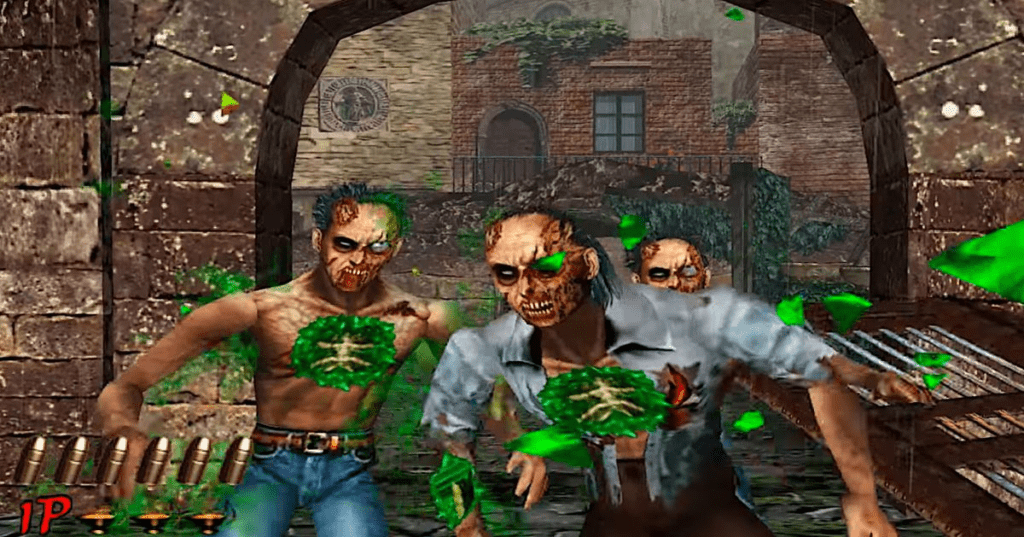Rail shooters have carved their own niche in the gaming world, offering players adrenaline-pumping experiences and fast-paced action. Let’s delve into the captivating realm of rail shooters, from their defining features to their evolution over the years, with a spotlight on influential titles from the 80s and 90s.
Defining the Genre: Key Features
Rail shooters, also known as “on-rails shooters,” are a subgenre of shoot ’em up games where players follow a predetermined path through a level, with the game controlling the character’s movement along a fixed route. Key features include:
- Linear Gameplay: Players move along a set path without the ability to explore freely, focusing solely on aiming and shooting at targets.
- Constant Forward Movement: The game dictates the pace by continuously propelling the player forward, intensifying the sense of urgency and excitement.
- Target-Based Challenges: Players encounter waves of enemies and obstacles to overcome, requiring precise aiming and quick reflexes to progress.
- Dynamic Perspectives: Rail shooters often incorporate dynamic camera angles and shifts in perspective to enhance immersion and visual spectacle.
History and Developments
The roots of rail shooters trace back to arcade classics of the 1980s, such as Space Invaders and Galaxian, which laid the groundwork for the genre’s mechanics. However, it was the release of Space Harrier by Sega in 1985 that truly defined the genre. Space Harrier featured a unique third-person perspective, with the player controlling a character on foot who flew across fantastical landscapes, shooting down enemies. Its pseudo-3D graphics and fast-paced gameplay captivated arcade-goers and set the stage for future rail shooters.
In the 1990s, advancements in technology allowed developers to push the boundaries of rail shooter experiences. The introduction of 3D graphics and improved hardware capabilities opened up new possibilities for immersive gameplay. Titles like Star Fox for the Super Nintendo Entertainment System (SNES) demonstrated the potential of 3D rail shooters, with its polygonal graphics and branching level paths.

As the decade progressed, rail shooters became more diverse in terms of setting and gameplay mechanics. Time Crisis by Namco, released in 1995, introduced a cover system that allowed players to take refuge behind objects to avoid enemy fire, adding a strategic element to the gameplay. Meanwhile, Panzer Dragoon for the Sega Saturn offered a cinematic experience set in a post-apocalyptic world populated by dragons and other fantastical creatures.
The rise of home consoles and the transition to 3D gaming in the late 1990s and early 2000s saw the genre continue to evolve. Titles like Rez pushed the boundaries of audiovisual immersion, combining rail shooter mechanics with rhythm-based gameplay and electronic music.
Influential Games and Features
1. Space Harrier (1985)
Developer: Sega
Platform: Arcade
Space Harrier revolutionized the rail shooter genre with its fast-paced gameplay and vibrant 3D graphics. Players assumed the role of the titular “Space Harrier,” blasting through surreal landscapes filled with enemies and obstacles.
2. Star Fox (1993)
Developer: Nintendo EAD
Platform: Super Nintendo Entertainment System (SNES)
Star Fox introduced players to the exhilarating world of 3D rail shooters. With its memorable characters, branching paths, and impressive technical achievements, it set a new standard for the genre.
3. Time Crisis (1995)
Developer: Namco
Platform: Arcade
Time Crisis revolutionized arcade rail shooters with its innovative cover system, allowing players to duck behind objects to avoid enemy fire. Its pedal-based control scheme added a layer of physicality to the gameplay, enhancing immersion.
4. House of the Dead (1996)
Developer: Sega
Platform: Arcade
House of the Dead epitomized the horror rail shooter genre, immersing players in a chilling narrative fraught with undead horrors. Its branching paths and multiple endings added replay value, keeping players coming back for more.

5. Panzer Dragoon (1995)
Developer: Team Andromeda
Platform: Sega Saturn
Panzer Dragoon captivated players with its breathtaking visuals and epic storytelling. Set in a post-apocalyptic world populated by mythical creatures, it offered a unique blend of rail shooter action and immersive world-building.
6. Virtual Cop (1994)
Developer: Sega
Platform: Arcade
Virtual Cop brought arcade rail shooters into the realm of law enforcement, casting players as members of an elite police unit tasked with taking down criminals. Its intuitive aiming mechanics and branching pathways added depth to the gameplay experience.
7. Rez (2001)
Developer: United Game Artists
Platform: Sega Dreamcast, PlayStation 2
Rez transcended traditional rail shooter conventions with its groundbreaking fusion of music, visuals, and gameplay. Players embarked on a sensory journey through cyberspace, combining shooting mechanics with rhythm-based gameplay.
All-Time Top 20 Rail Shooters
- Star Fox 64 (1997)
- Time Crisis II (1997)
- Panzer Dragoon Saga (1998)
- House of the Dead 2 (1998)
- Rez Infinite (2016)
- Sin and Punishment: Star Successor (2009)
- Star Wars: Rebel Assault (1993)
- After Burner (1987)
- Silent Scope (1999)
- Lethal Enforcers (1992)
- The Typing of the Dead (1999)
- Virtua Cop 2 (1995)
- Gal (1979)
- Duck Hunt (1984)
- Operation Wolf (1987)
- Space Harrier 3-D (1988)
- Wild Guns (1994)
- Resident Evil: The Umbrella Chronicles (2007)
- The House of the Dead: Overkill (2009)
- Star Wars Arcade (1983)

Rail shooters continue to captivate players with their immersive gameplay experiences and innovative mechanics. As technology advances, we can expect the genre to evolve further, pushing the boundaries of interactive entertainment.

